Handling Diversity of Visions and Priorities in Food Chain Sustainability Assessment
Abstract
:1. Introduction
2. Materials and Methods
2.1. Methodology of the Preliminary Assessment
2.1.1. Case Studies Selection
2.1.2. Attributes for Sustainability Assessment
2.2. Methodology of the Participatory Assessment
- A prioritization of the five sustainability dimensions for sustainability assessment of the wheat-to-bread chain (scale from 0 to 9).
- A prioritization of the sustainability attributes within each dimension. Stakeholders were asked to assign a level of importance to each attribute (scale from 0 to 9) as a criteria to assess the sustainability performance of the wheat-to-bread chain.
- Stakeholder judgment on the performance of three chains presented, with respect to each attribute assuming the availability of an “optimal” indicator (scale from 0 to 9).
3. Results
3.1. Results of the Preliminary Assessment
3.1.1. Economic Performance
3.1.2. Social Performance
3.1.3. Environmental Performance
3.1.4. Human Health Performance
3.1.5. Ethical Performance
3.2. Results of the Participatory Assessment
3.2.1. Individual Assessments
3.2.2. Comparison of preliminary and stakeholder assessment
“Single attributes can be measured fairly objectively, in principle. But expectations that consumers have on these products are very diverse. When a consumer purchasing a local product is betrayed on the local origin of raw material, consumer confidence drops. The expectation on our products is completely different, at most the national origin of raw material could be expected (but not guaranteed or certified). Therefore, the reference for the assessment must be different.” (…) “The importance of the single parameter chosen for the assessment changes across different chains: in the local case the promise is the use of an ancient variety, in my company a major expectation is on good taste and standardization: my products need to be absolutely equal. The promise is different. The parameters become more or less relevant depending on the promise that I make (…) I can measure objectively some indicators, but then the promise that I make is what actually matters.” (Global chain stakeholder, Authors’ translation).
“(…) CO2 emissions, is a parameter that-like it or not-will be crucial to the debate in the next five years, at least. And this parameter indicates that it is not necessarily true that small/local is better overall. For example the Canadian wheat with good agricultural practices and transported by ship is better than the Sicilian wheat. The way you grow the raw materials is very relevant and farming practices are crucial. When we get to this kind of discussion, what is expected is very different from the reality, because the variables affecting the results are different from those to which we normally think”. (Global chain stakeholder, Authors’ translation).
“Certification needs increase with scale and complexity. The necessity of standard production processes (at the industrial level) is part of a responsible management of processes. If my production line goes “out of the standard” the risk is to throw away tons of product. The consequence is the need for standardization. This is not required by the small bakery, which is much more flexible”. (Global chain stakeholder, Authors’ translation).
“Traceability means transparency and safety and it is important for the consumer, but it also implies additional costs, and this impacts on affordability for the consumer”. (Retailer, Authors’ translation).
“Often, product price is very high (i.e., price per kg of bread) and not justified by any specific quality, and without any information either”. (Regional chain stakeholder, Authors’ translation).
4. Discussion: Main Sources of Challenge to Sustainability Assessment
4.1. The Complexity of Food Supply Chains
4.2. The Multidimensionality of the Sustainability Concept
4.3. The Pliability of the Sustainability Concept
4.4. The Dynamicity of Sustainability Objectives
4.5. The Governance Implications of Sustainability Assessment for Food Supply Chains
5. Conclusions
Acknowledgments
Author Contributions
Conflicts of Interest
Appendix
| Cluster | Id | Organization |
|---|---|---|
| 1 | 1 | Tuscan Bread Consortium |
| 1 | 4 | National Association for industrial bakery |
| 1 | 5 | Food technology expert |
| 1 | 7 | Local case collaborator |
| 2 | 2 | Regional case milling company |
| 2 | 9 | NGO (Rural Seed Network) |
| 3 | 8 | Regional consortium of farmers |
| 3 | 12 | Representative of the global baking company (Barilla) |
| 4 | 6 | Terre regionali Toscane, regional farm (public ownership) |
| 4 | 11 | Solidarity Purchasing Groups |
| 4 | 13 | Regional association of bakers |
| 4 | 3 | National retailer (Coop) |
| 4 | 10 | Local association of bakers |
References
- Bebbington, J.; Brown, J.; Frame, B. Accounting technologies and sustainability assessment models. Ecol. Econ. 2007, 61, 224–236. [Google Scholar] [CrossRef]
- Ness, B.; Urbel-Piirsalu, E.; Anderberg, S.; Olsson, L. Categorising tools for sustainability assessment. Ecol. Econ. 2007, 60, 498–508. [Google Scholar] [CrossRef]
- Seuring, S.; Müller, M. From a literature review to a conceptual framework for sustainable supply chain management. J. Clean. Prod. 2008, 16, 1699–1710. [Google Scholar] [CrossRef]
- Ostrom, E.A. A General Framework for Analyzing Sustainability of Social-Ecological Systems. Science 2009, 325, 419–422. [Google Scholar] [CrossRef] [PubMed]
- Ilbery, B.; Maye, D. Food supply chains and sustainability: Evidence from specialist food producers in the scottish/english borders. Land Use Policy 2005, 22, 331–344. [Google Scholar] [CrossRef]
- Gasparatos, A. Embedded value systems in sustainability assessment tools and their implications. J. Environ. Manag. 2010, 91, 1613–1622. [Google Scholar] [CrossRef] [PubMed]
- Gasparatos, A.; El-Haram, M.; Horner, M. A critical review of reductionist approaches for assessing the progress towards sustainability. Environ. Impact Assess. Rev. 2008, 28, 286–311. [Google Scholar] [CrossRef]
- Gasparatos, A.; Scolobig, A. Choosing the most appropriate sustainability assessment tool. Ecol. Econ. 2012, 80, 1–7. [Google Scholar] [CrossRef]
- Binder, C.R.; Feola, G.; Steinberger, J.K. Considering the normative, systemic and procedural dimensions in indicator-based sustainability assessments in agriculture. Environ. Impact Assess. Rev. 2010, 30, 71–81. [Google Scholar] [CrossRef]
- Munda, G. Social multi-criteria evaluation for urban sustainability policies. Land Use Policy 2006, 23, 86–94. [Google Scholar] [CrossRef]
- Schader, C.; Grenz, J.; Meier, M.S.; Stolze, M. Scope and precision of sustainability assessment approaches to food systems. Ecol. Soc. 2014, 19. [Google Scholar] [CrossRef]
- Munda, G. Social Multi-Criteria Evaluation for a Sustainable Economy; Springer: Heidelbery, Genmary, 2008. [Google Scholar]
- Voss, J.P.; Bauknecht, D.; Kemp, R. Reflexive Governance for Sustainable Development; Edward Elgar Publishing: Cheltenham, UK, 2006. [Google Scholar]
- Yakovleva, N.; Sarkis, J.; Sloan, T. Sustainable benchmarking of supply chains: The case of the food industry. Int. J. Prod. Res. 2012, 50, 1297–1317. [Google Scholar] [CrossRef]
- Hinrichs, C.C. Transitions to sustainability: A change in thinking about food systems change? Agric. Hum. Values 2014, 31, 143–155. [Google Scholar] [CrossRef]
- Funtowicz, S.O.; Ravetz, J.R. The emergence of post-normal science. In Science, Politics and Morality; Springer: London, UK, 1993; pp. 85–123. [Google Scholar]
- Bond, A.J.; Morrison-Saunders, A. Re-evaluating sustainability assessment: Aligning the vision and the practice. Environ. Impact Assess. Rev. 2011, 31, 1–7. [Google Scholar] [CrossRef]
- Sala, S.; Ciuffo, B.; Nijkamp, P. A systemic framework for sustainability assessment. Ecol. Econ. 2015, 119, 314–325. [Google Scholar] [CrossRef]
- Eisenhardt, K.M. Building theories from case study research. Acad. Manag. Rev. 1989, 14, 532–550. [Google Scholar]
- Eisenhardt, K.M.; Graebner, M.E. Theory building from cases: Opportunities and challenges. Acad. Manag. J. 2007, 50, 25–32. [Google Scholar] [CrossRef]
- Wacker, J.G. A definition of theory: Research guidelines for different theory-building research methods in operations management. J. Oper. Manag. 1998, 16, 361–385. [Google Scholar] [CrossRef]
- Kirwan, J.; Maye, D.; Bundhoo, D.; Keech, D.; Brunori, G. Glamur wp2-Scoping/Framing General Comparative Report on Food Chain Performance (deliverable 2.3); Countryside and Community Research Institute, University of Gloucestershire: Cheltenham, UK, 2014. [Google Scholar]
- Galli, F.; Bartolini, F.; Brunori, G.; Colombo, L.; Gava, O.; Grando, S.; Marescotti, A. Sustainability assessment of food supply chains: An application to local and global bread in italy. Agric. Food Econ. 2015, 3, 1–17. [Google Scholar] [CrossRef]
- Gava, O.; Galli, F.; Bartolini, F.; Brunori, G. Sustainability of Local Versus Global Bread Supply Chains: A Literature Review. In Proceedings of the 2014 Third Congress, Alghero, Italy, 25–27 June 2014.
- Saaty, T.L. Fundamentals of Decision Making and Priority Theory with the Analytic Hierarchy Process; RWS Publications: Pittsburgh, PA, USA, 2000; Volume 6. [Google Scholar]
- In detail, 8 attributes were removed and 3 were added: animal welfare has no direct relevance for the bread chain, affordability was excluded because prices are considered within the FAO food security definition (economic access) and consumer behavior was not covered by the assessment. Connection is considered within territoriality and resilience is considered within rural development. Fair trade was considered as “distribution of added value” (while creation of added value was kept as a separate attribute), efficiency is considered within resource use, traceability is considered within transparency. Technological innovation was turned into “innovation for non-economic purposes”. Rural development is added to specify contribution to economic development in rural areas. Trust between producer and consumer was also included.
- Schmitt, E.; Cravero, V.; Tanquery-Cado, A.; Barjolle, D. Glamur wp3 Guidelines for Case Studies; Research Institute of Organic Agriculture: Frick, Switzerland, 2014. [Google Scholar]
- Caliński, T.; Harabasz, J. A dendrite method for cluster analysis. Commun. Stat.-Theory Methods 1974, 3, 1–27. [Google Scholar] [CrossRef]
- Castioni, F.; Moretti, R. Pane Nuovo da Grani Antichi. Evoluzione Delle Varietà di Grano, Della Tecnica Molitoria e Panificatoria; Industrie Grafiche Pacini Editore: Siena, Italy, 2013. (In Italian) [Google Scholar]
- Calderini, D.; Dreccer, M.; Slafer, G. Genetic improvement in wheat yield and associated traits. A re-examination of previous results and the latest trends. Plant Breed. 1995, 114, 108–112. [Google Scholar] [CrossRef]
- Bonnin, I.; Bonneuil, C.; Goffaux, R.; Montalent, P.; Goldringer, I. Explaining the decrease in the genetic diversity of wheat in france over the 20th century. Agric. Ecosyst. Environ. 2014, 195, 183–192. [Google Scholar] [CrossRef]
- Bonneuil, C.; Goffaux, R.; Bonnin, I.; Montalent, P.; Hamon, C.; Balfourier, F.; Goldringer, I. A new integrative indicator to assess crop genetic diversity. Ecol. Indic. 2012, 23, 280–289. [Google Scholar] [CrossRef]
- Chateil, C.; Goldringer, I.; Tarallo, L.; Kerbiriou, C.; Le Viol, I.; Ponge, J.-F.; Salmon, S.; Gachet, S.; Porcher, E. Crop genetic diversity benefits farmland biodiversity in cultivated fields. Agric. Ecosyst. Environ. 2013, 171, 25–32. [Google Scholar] [CrossRef]
- Dawson, J.; Serpolay, E.; Giuliano, S.; Schermann, N.; Galic, N.; Chable, V.; Goldringer, I. Multi-trait evolution of farmer varieties of bread wheat after cultivation in contrasting organic farming systems in europe. Genetica 2012, 140, 1–17. [Google Scholar] [CrossRef] [PubMed]
- Chable, V.; Dawson, J.; Bocci, R.; Goldringer, I. Seeds for organic agriculture: Development of participatory plant breeding and farmers’ networks in france. In Organic Farming, Prototype for Sustainable Agricultures; Springer: Dordrecht, The Netherlands, 2014; pp. 383–400. [Google Scholar]
- Environmental Product Declaration, Barilla Company. Dichiarazione ambientale di prodotto applicata al panbauletto. Available online: http://gryphon.environdec.com/data/files/6/8906/epd223it_Barilla_PanBauletto_2012.pdf (accessed on 23 March 2016).
- Michal, K.; Thomas, N. D8.5environmental Assessment of Diversified Cropping Systems; Agroscope: Zurich, Switzerland, 2014. [Google Scholar]
- Espinoza-Orias, N.; Stichnothe, H.; Azapagic, A. The carbon footprint of bread. Int. J. Life Cycle Assess. 2011, 16, 351–365. [Google Scholar] [CrossRef]
- Andersson, K.; Ohlsson, T. Life cycle assessment of bread produced on different scales. Int. J. Life Cycle Assess. 1999, 4, 25–40. [Google Scholar] [CrossRef]
- Mondal, A.; Datta, A. Bread baking–a review. J. Food Eng. 2008, 86, 465–474. [Google Scholar] [CrossRef]
- Mena, C.; Adenso-Diaz, B.; Yurt, O. The causes of food waste in the supplier–retailer interface: Evidences from the UK and Spain. Resour. Conserv. Recycl. 2011, 55, 648–658. [Google Scholar] [CrossRef]
- Poutanen, K.; Flander, L.; Katina, K. Sourdough and cereal fermentation in a nutritional perspective. Food Microbiol. 2009, 26, 693–699. [Google Scholar] [CrossRef] [PubMed]
- Katina, K.; Heiniö, R.L.; Autio, K.; Poutanen, K. Optimization of sourdough process for improved sensory profile and texture of wheat bread. LWT-Food Sci. Technol. 2006, 39, 1189–1202. [Google Scholar] [CrossRef]
- Hu, F.B.; Willett, W.C. Optimal diets for prevention of coronary heart disease. JAMA 2002, 288, 2569–2578. [Google Scholar] [CrossRef] [PubMed]
- Elbehri, A. The Changing Face of the Us Grain System: Differentiation and Identity Preservation Trends; United States Department of Agriculture, Economic Research Service: Washington, DC, USA, 2007. Available online: http://www.ers.usda.gov/media/201679/err35_1_.pdf (accessed on 23 March 2016).
- Hills, K.M.; Goldberger, J.R.; Jones, S.S. Commercial bakers and the relocalization of wheat in western washington state. Agric. Hum. Values 2013, 30, 365–378. [Google Scholar] [CrossRef]
- Barling, D.; Sharpe, R.; Lang, T. Traceability and ethical concerns in the UK wheat—Bread chain: From food safety to provenance to transparency. Int. J. Agric. Sustain. 2009, 7, 261–278. [Google Scholar] [CrossRef]
- Nelson, E.; Tovar, L.G.; Rindermann, R.S.; Cruz, M.Á.G. Participatory organic certification in mexico: An alternative approach to maintaining the integrity of the organic label. Agric. Hum. Values 2010, 27, 227–237. [Google Scholar] [CrossRef]
- Lowe, P.; Phillipson, J.; Lee, R.P. Socio-technical innovation for sustainable food chains: Roles for social science. Trends Food Sci. Technol. 2008, 19, 226–233. [Google Scholar] [CrossRef]
- Hand, M.S.; Martinez, S. Just what does local mean. Choices 2010, 25, 13–18. [Google Scholar]
- Pretty, J.N.; Ball, A.S.; Lang, T.; Morison, J.I. Farm costs and food miles: An assessment of the full cost of the UK weekly food basket. Food Policy 2005, 30, 1–19. [Google Scholar] [CrossRef]
- Schnell, S.M. Food miles, local eating, and community supported agriculture: Putting local food in its place. Agric. Hum. Values 2013, 30, 615–628. [Google Scholar] [CrossRef]
- Coley, D.; Howard, M.; Winter, M. Local food, food miles and carbon emissions: A comparison of farm shop and mass distribution approaches. Food Policy 2009, 34, 150–155. [Google Scholar] [CrossRef]
- Kemp, K.; Insch, A.; Holdsworth, D.K.; Knight, J.G. Food miles: Do UK consumers actually care? Food Policy 2010, 35, 504–513. [Google Scholar] [CrossRef]
- Sirieix, L.; Grolleau, G.; Schaer, B. Do consumers care about food miles? An empirical analysis in france. Int. J. Consum. Stud. 2008, 32, 508–515. [Google Scholar] [CrossRef]
- Wiskerke, J.S. On promising niches and constraining sociotechnical regimes: The case of Dutch wheat and bread. Environ. Plan. A 2003, 35, 429–448. [Google Scholar] [CrossRef]
- Schiefer, G.; Fritz, M.; Gellynck, X.; Molnár, A. Chain governance structures: The European traditional food sector. Br. Food J. 2009, 111, 762–775. [Google Scholar] [CrossRef]
- Gereffi, G.; Humphrey, J.; Sturgeon, T. The governance of global value chains. Rev. Int. Political Econ. 2005, 12, 78–104. [Google Scholar] [CrossRef]
- Barham, E.; Sylvander, B. Labels of Origin for Food: Local Development, Global Recognition; CABI: Wallingford, Oxfordshire, UK, 2011. [Google Scholar]
- Roy, P.; Nei, D.; Orikasa, T.; Xu, Q.; Okadome, H.; Nakamura, N.; Shiina, T. A review of Life Cycle Assessment (LCA) on some food products. J. Food Eng. 2009, 90, 1–10. [Google Scholar] [CrossRef]
- Veisi, H.; Liaghati, H.; Alipour, A. Developing an ethics-based approach to indicators of sustainable agriculture using Analytic Hierarchy Process (AHP). Ecol. Indic. 2016, 60, 644–654. [Google Scholar] [CrossRef]
- Cawthorn, D.M.; Hoffman, L.C. The bushmeat and food security nexus: A global account of the contributions, conundrums and ethical collisions. Food Res. Int. 2015, 76, 906–925. [Google Scholar] [CrossRef]
- Coff, C.; Korthals, M.; Barling, D. Ethical traceability and informed food choice. In Ethical Traceability and Communicating Food; Springer: Dordrecht, The Netherlands, 2008; pp. 1–18. [Google Scholar] [CrossRef]
- Candel, J.J.; Breeman, G.E.; Stiller, S.J.; Termeer, C.J. Disentangling the consensus frame of food security: The case of the EU common agricultural policy reform debate. Food Policy 2014, 44, 47–58. [Google Scholar] [CrossRef]
- Mooney, P.H.; Hunt, S.A. Food security: The elaboration of contested claims to a consensus frame*. Rural Sociol. 2009, 74, 469–497. [Google Scholar] [CrossRef]
- Konefal, J.; Mascarenhas, M.; Hatanaka, M. Governance in the global agro-food system: Backlighting the role of transnational supermarket chains. Agric. Hum. Values 2005, 22, 291–302. [Google Scholar] [CrossRef]
- Ponte, S.; Cheyns, E. Voluntary standards, expert knowledge and the governance of sustainability networks. Glob. Netw. 2013, 13, 459–477. [Google Scholar] [CrossRef]
- Campbell, H. Breaking new ground in food regime theory: Corporate environmentalism, ecological feedbacks and the ‘food from somewhere’regime? Agric. Hum. Values 2009, 26, 309–319. [Google Scholar] [CrossRef]
- Newell, J.P.; Vos, R.O. “papering” over space and place: Product carbon footprint modeling in the global paper industry. Ann. Assoc. Am. Geogr. 2011, 101, 730–741. [Google Scholar] [CrossRef]
- Freidberg, S. Footprint technopolitics. Geoforum 2014, 55, 178–189. [Google Scholar] [CrossRef]
- Garnett, T. Three perspectives on sustainable food security: Efficiency, demand restraint, food system transformation. What role for life cycle assessment? J. Clean. Product. 2014, 73, 10–18. [Google Scholar] [CrossRef]
- Gold, S.; Seuring, S.; Beske, P. Sustainable supply chain management and inter-organizational resources: A literature review. Corp. Soc. Responsib. Environ. Manag. 2010, 17, 230–245. [Google Scholar] [CrossRef]
- Kemp, R.; Loorbach, D. Transition management: A reflexive governance approach. In Reflexive Governance for Sustainable Development; Voss, J.P., Bauknecht, D., Kemp, R., Eds.; Edward Elgar Publishing: Cheltenham, UK, 2006; pp. 103–130. [Google Scholar]
- Feindt, P. Reflexive governance of global public goods: Multi-level and multireferential goveraqnce in agriculture policy. In Reflexive Governance for Public Goods; Brousseau, E., Dedeurwaerdere, T., Siebenhüner, B., Eds.; MIT Press: Boston, MA, USA, 2010. [Google Scholar]
- Starr, M.A. Qualitative and mixed-methods research in economics: Surprising growth, promising future. J. Econ. Surv. 2014, 28, 238–264. [Google Scholar] [CrossRef]
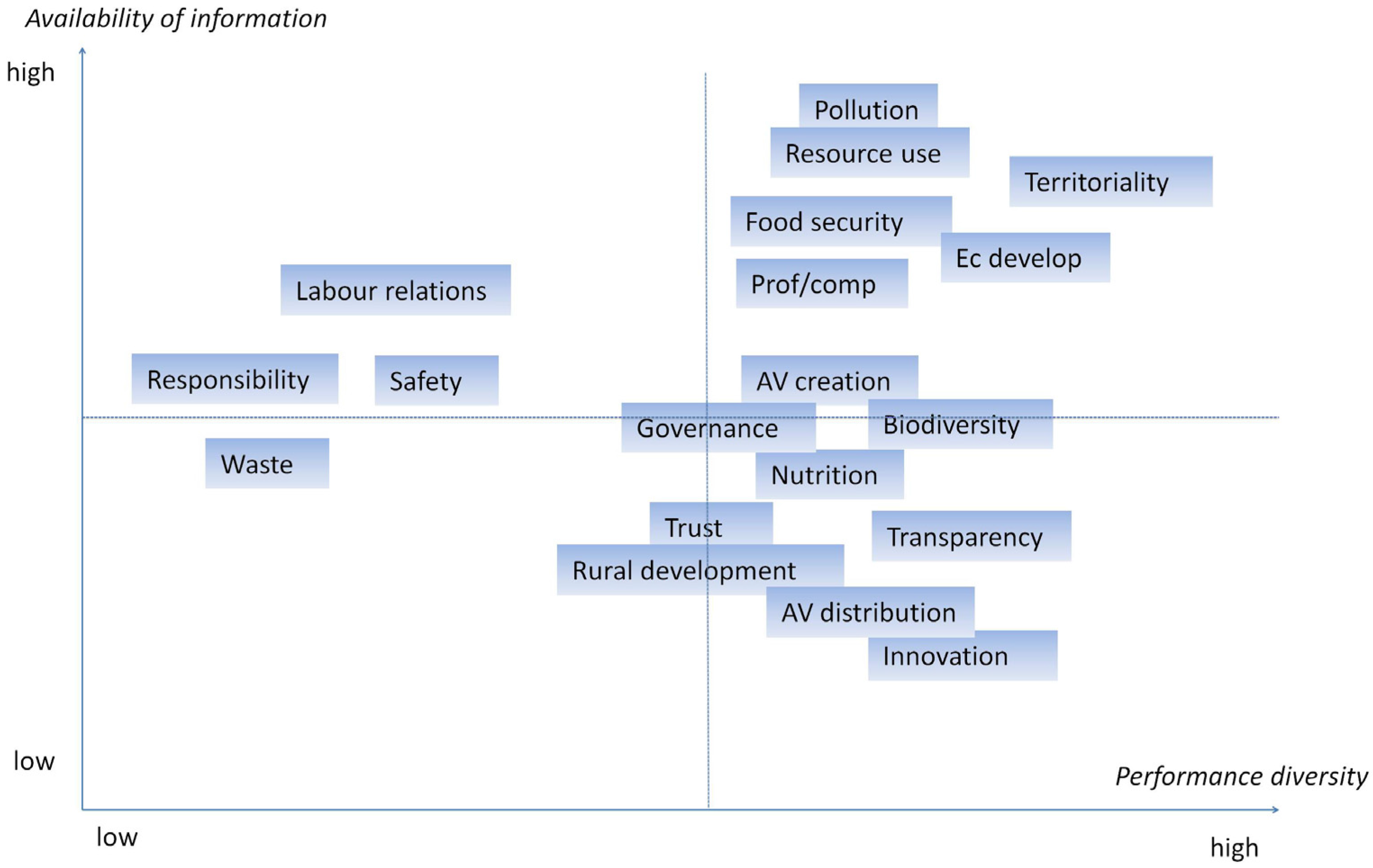
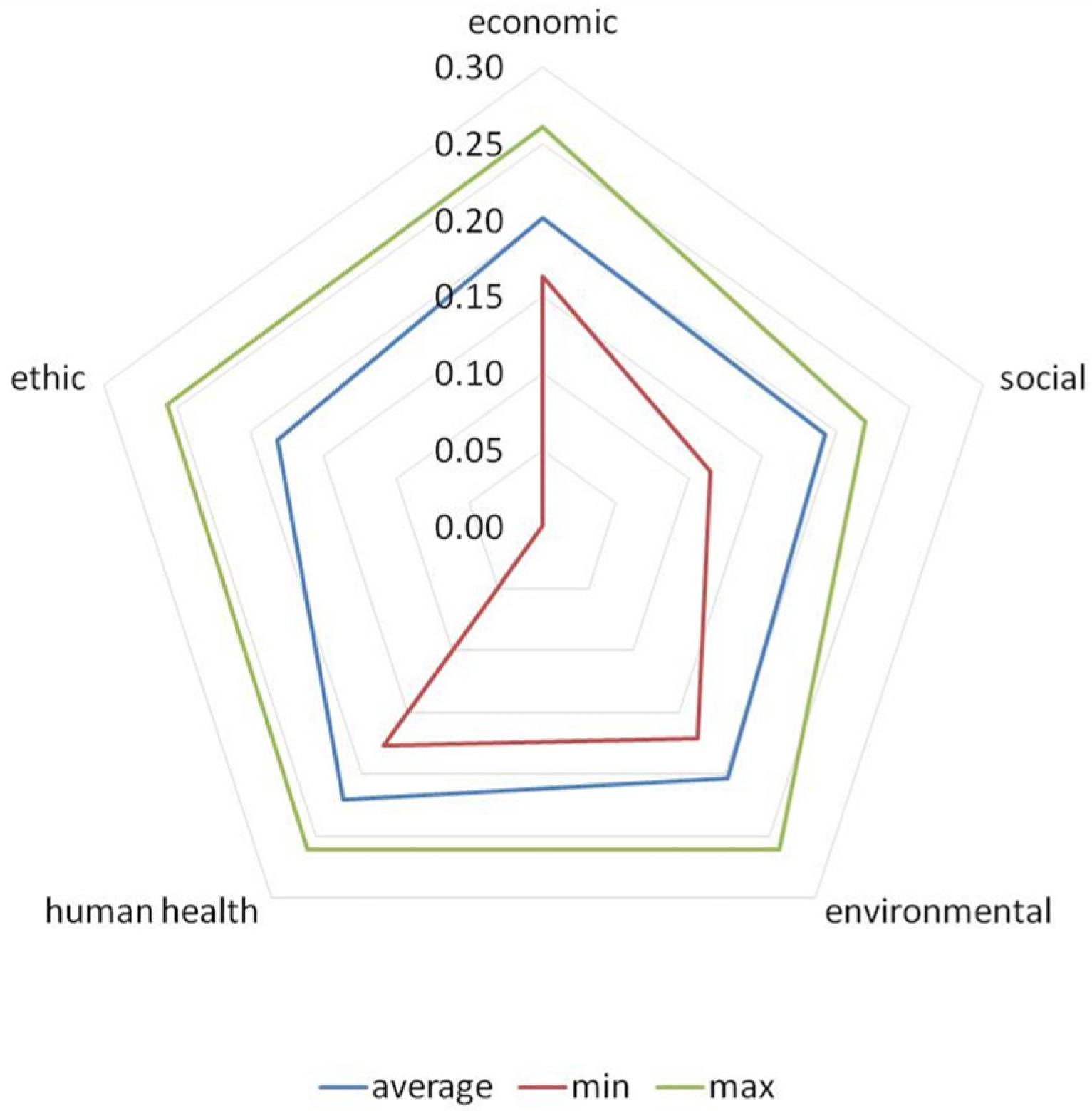
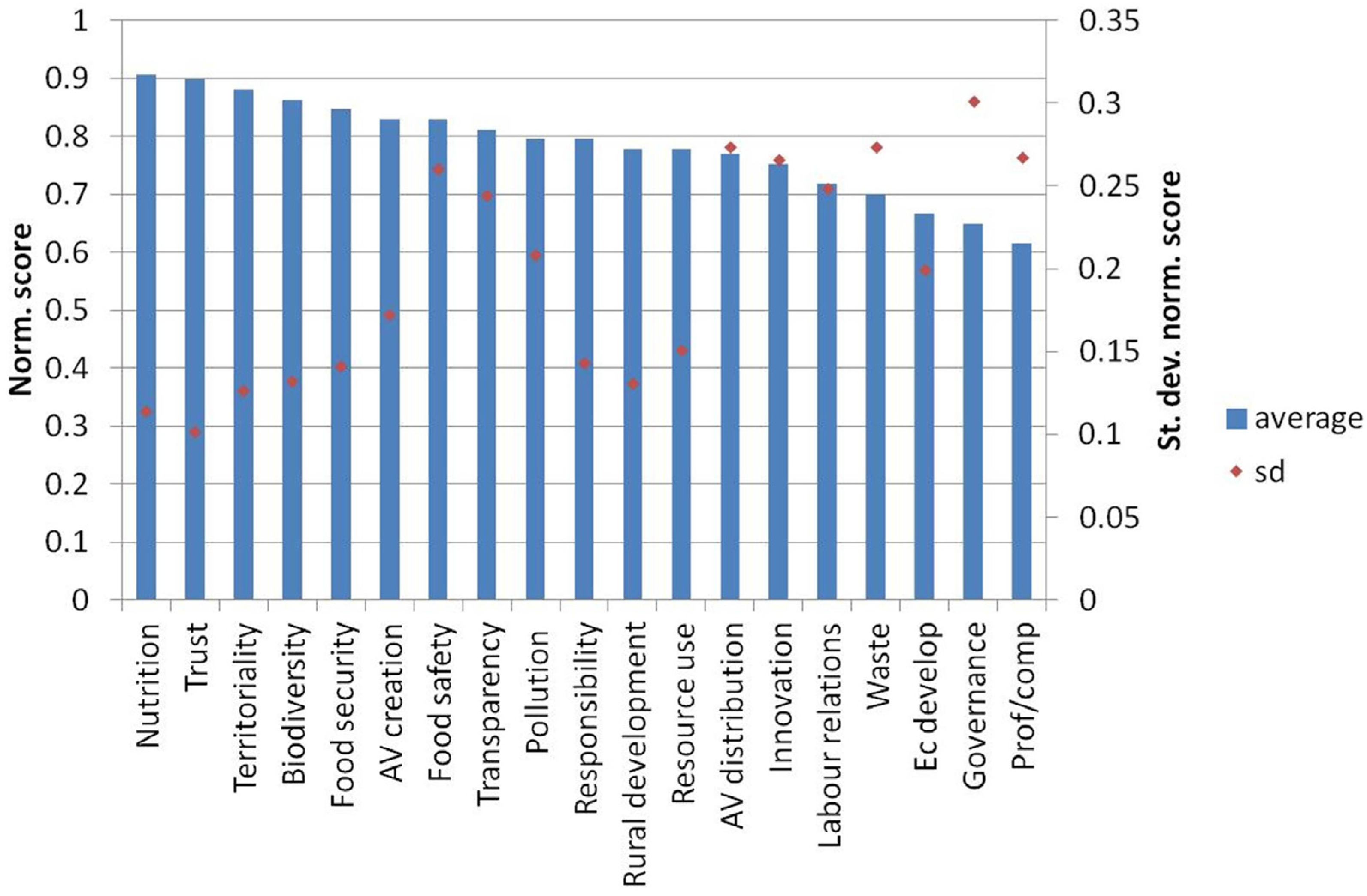
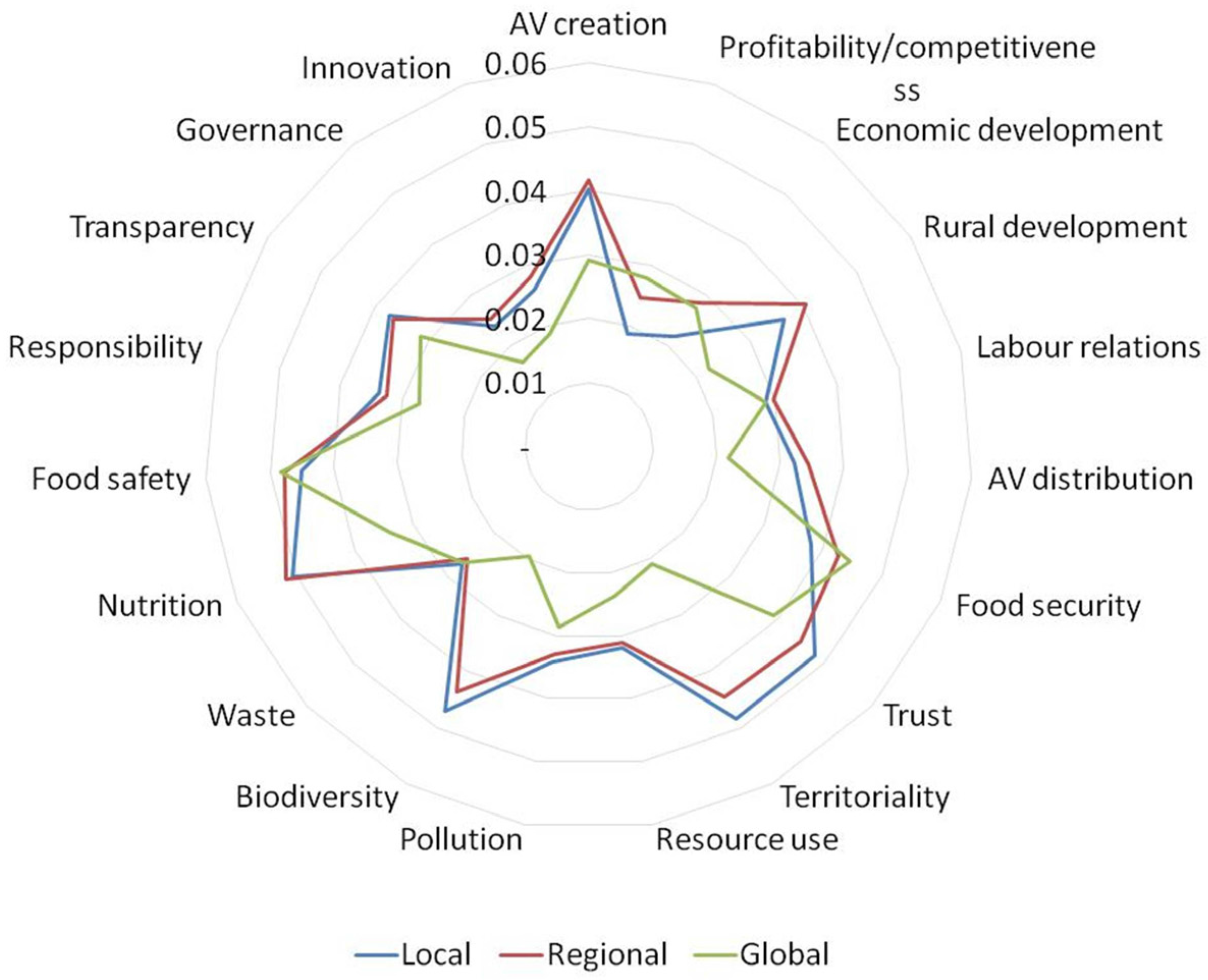
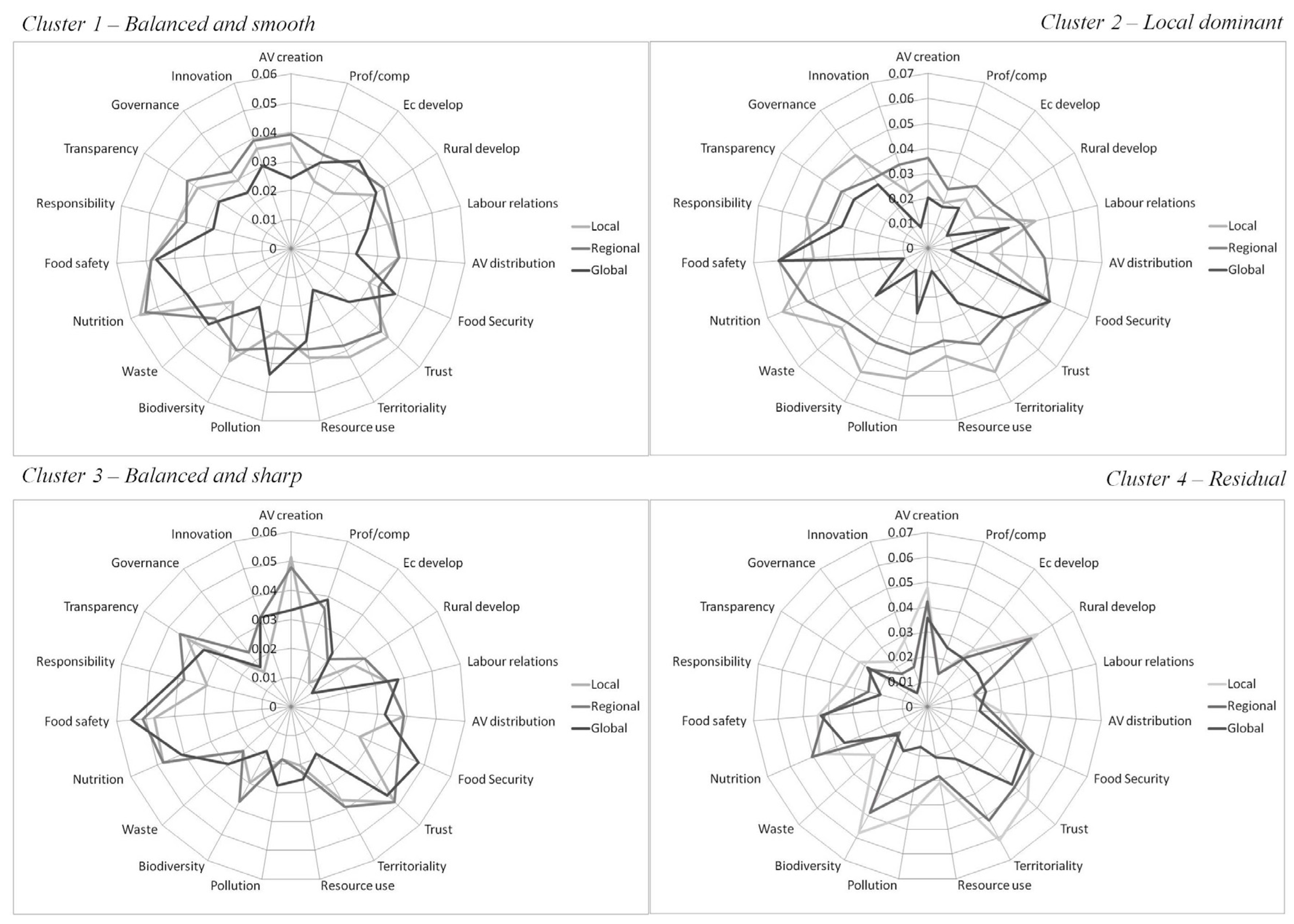
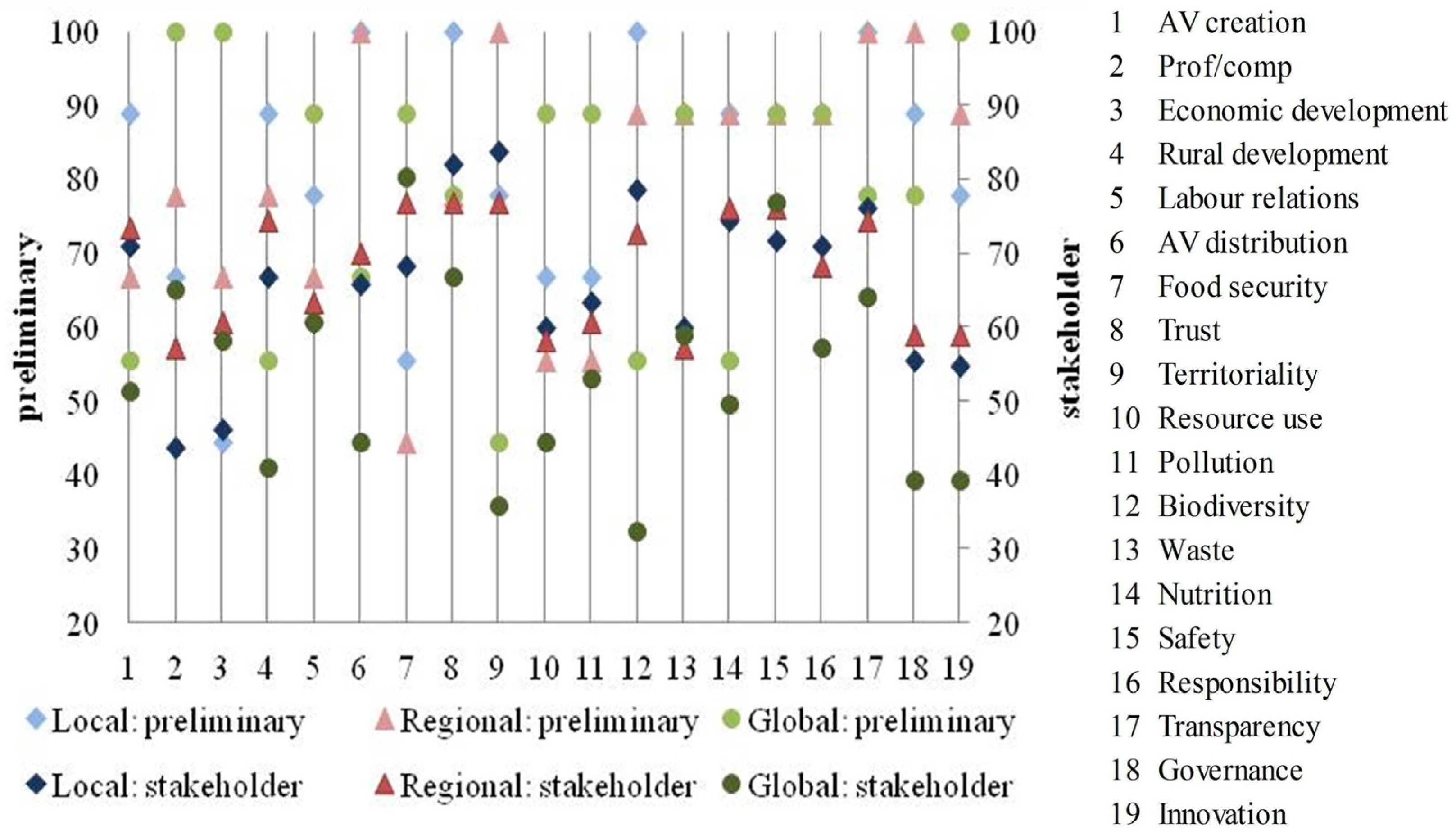
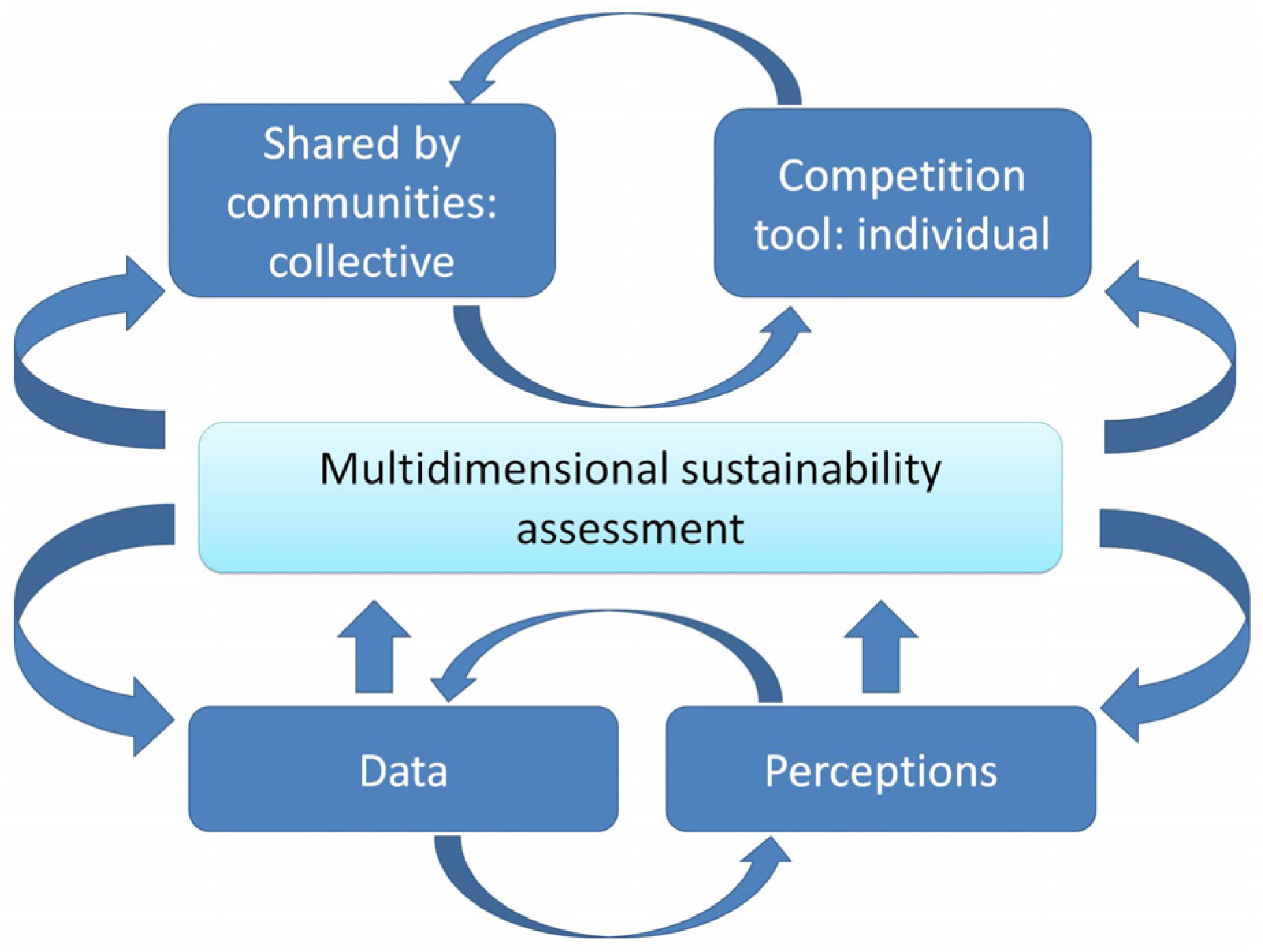
| Case | Quantity of Bread (tons/year) | Conversion Factor (kg of Wheat/kg of Bread, Range Values) | Price to Consumer, Range (€/kg) | Average Price Comparable Bread (€/kg) | Price Range for Soft Wheat (€/ton) |
|---|---|---|---|---|---|
| Local | 21 | 0.95–1.09 | 3.50–4.20 | 2.25 | 400–450 * |
| Regional | 200 | 1.12–1.20 | 3.00–3.50 | 2.4 | 240–270 ** |
| Global | 19815 | 1.20–1.28 | 2.85–3.00 | 2.4 | 180–190 *** |
| Case | Farming | Milling | Leavening | Baking | Distribution | Shelf Life |
|---|---|---|---|---|---|---|
| Local | ancient wheat varieties, organic farming | stone milling and cylinder milling | craft kneading, sourdough and bakers’ yeast | discontinuous baking, wood oven | direct sale or small retailers, local market | Up to 7 days |
| Regional | selected wheat varieties, conventional and integrated farming | cylinder milling (reduced speed and temperature control to preserve the germ in the flour) | industrial kneading, sourdough | discontinuous baking, electric and gas oven | regional distribution through retailers, collective mark (PDO specification) | 4 to 6 days |
| Global | wheat sourced on national and continental market, conventional farming | cylinder milling | industrial kneading, baker’s yeast | continuous baking, gas oven | retailers and mass distribution on national market | Up to 30 days |
| Sustainability | Attribute | Definition |
|---|---|---|
| Economic | AV creation | Product’s ability to obtain a price premium that remunerates production |
| Profitability/competitiveness | Ability of the chain to get stable prices, access to credit, access to factors of production (raw materials and skilled labor), market access | |
| Economic development | Contribution to growth and employment | |
| Rural development | Contribution to growth and employment in rural areas | |
| Social | Labour relations | Quality of working conditions of the operators in the industry |
| AV distribution | Fairness of the distribution of added value along the supply chain | |
| Food security | Stability in the availability and access (physical and economic) | |
| Trust | Relationship of trust between producers and consumers | |
| Territoriality | Ability of the chain to reflect the links between the product and the territory | |
| Environmental | Resource use | Resources consumed (land, energy, other materials) in the production process |
| Pollution | Negative impacts on the ecosystem | |
| Biodiversity | Contribution of food chains to the preservation of diversity of species and ecosystems | |
| Waste | Losses and waste of raw materials, semi-finished and finished products | |
| Human health | Nutrition | Nutritional qualities associated with the food in terms of composition and capabilities of the product to contribute to the physical health and well-being |
| Safety | Standards of hygiene and safety adopted by companies to reduce the risks associated with complex transformation and storage of food | |
| Ethical | Responsibility | Company procedures based on non-trade values. Coherence between behavior and communication. |
| Transparency | Information conveyed to consumers, and communication between the actors in the chain (including traceability). | |
| Governance | Stakeholder involvement to business decisions. | |
| Innovation | Innovations for primarily environmental, social and health aims |
| Indicators/kg of Bread | Local | Global | |
|---|---|---|---|
| Pollution | GWP g CO2 eq. | 22.5 | 18.2 |
| Resource use | Energy MJ | 1800 | 1012 |
© 2016 by the authors; licensee MDPI, Basel, Switzerland. This article is an open access article distributed under the terms and conditions of the Creative Commons by Attribution (CC-BY) license (http://creativecommons.org/licenses/by/4.0/).
Share and Cite
Galli, F.; Bartolini, F.; Brunori, G. Handling Diversity of Visions and Priorities in Food Chain Sustainability Assessment. Sustainability 2016, 8, 305. https://doi.org/10.3390/su8040305
Galli F, Bartolini F, Brunori G. Handling Diversity of Visions and Priorities in Food Chain Sustainability Assessment. Sustainability. 2016; 8(4):305. https://doi.org/10.3390/su8040305
Chicago/Turabian StyleGalli, Francesca, Fabio Bartolini, and Gianluca Brunori. 2016. "Handling Diversity of Visions and Priorities in Food Chain Sustainability Assessment" Sustainability 8, no. 4: 305. https://doi.org/10.3390/su8040305
APA StyleGalli, F., Bartolini, F., & Brunori, G. (2016). Handling Diversity of Visions and Priorities in Food Chain Sustainability Assessment. Sustainability, 8(4), 305. https://doi.org/10.3390/su8040305








